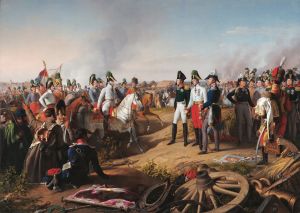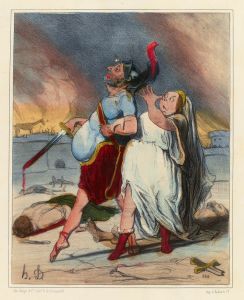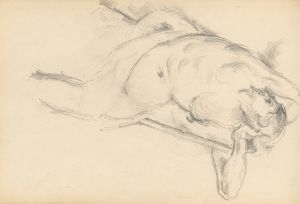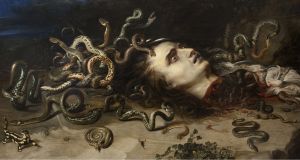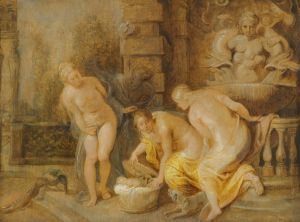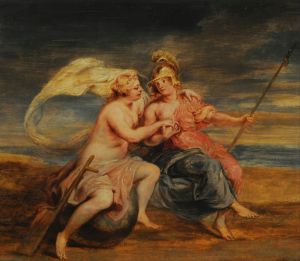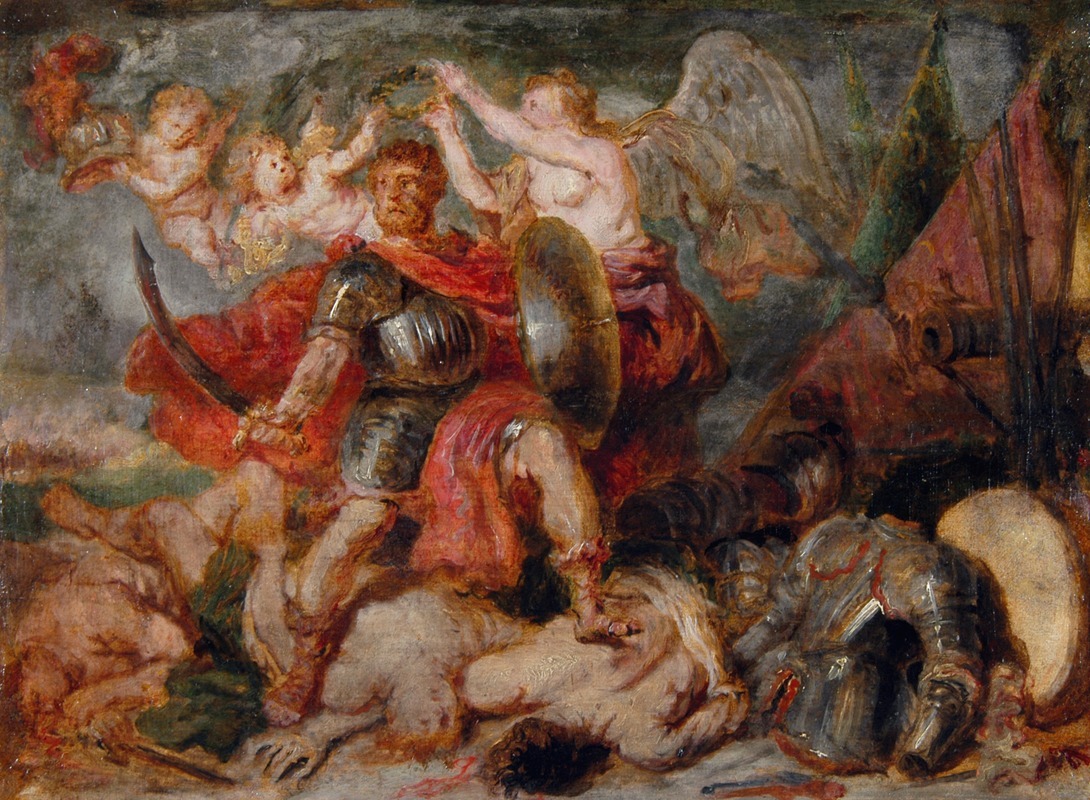
Le triomphe d’Henri IV
A hand-painted replica of Peter Paul Rubens’s masterpiece Le triomphe d’Henri IV, meticulously crafted by professional artists to capture the true essence of the original. Each piece is created with museum-quality canvas and rare mineral pigments, carefully painted by experienced artists with delicate brushstrokes and rich, layered colors to perfectly recreate the texture of the original artwork. Unlike machine-printed reproductions, this hand-painted version brings the painting to life, infused with the artist’s emotions and skill in every stroke. Whether for personal collection or home decoration, it instantly elevates the artistic atmosphere of any space.
Peter Paul Rubens, a prominent Flemish Baroque painter, is renowned for his dynamic compositions, vibrant color palette, and grandiose style. Among his extensive body of work, "Le triomphe d’Henri IV" stands as a testament to his mastery in capturing historical and allegorical subjects. However, it is important to note that there is limited specific information available about a painting titled "Le triomphe d’Henri IV" by Rubens. It is possible that this title may refer to a series of works or a particular piece within a larger collection, such as the Marie de' Medici cycle, which celebrates the life and achievements of Marie de' Medici, the queen of France and wife of King Henry IV.
The Marie de' Medici cycle, completed between 1622 and 1625, is a series of 24 paintings commissioned by Marie de' Medici herself for the Luxembourg Palace in Paris. These paintings are among Rubens' most famous works and are currently housed in the Louvre Museum. The cycle chronicles the life of Marie de' Medici, including her marriage to Henry IV, her regency, and her eventual reconciliation with her son, King Louis XIII. Rubens' ability to blend historical events with allegorical elements is evident throughout the series, showcasing his skill in both narrative and symbolic representation.
While there is no specific painting titled "Le triomphe d’Henri IV" within the Marie de' Medici cycle, the series does include works that highlight significant moments in Henry IV's life and reign. For instance, "The Meeting of Marie de' Medici and Henry IV at Lyon" depicts the couple's first encounter, while "The Coronation in Saint-Denis" illustrates Marie's coronation as queen. These paintings, like others in the cycle, are characterized by Rubens' dynamic compositions, rich color schemes, and the integration of mythological and allegorical figures, which serve to elevate the historical narrative.
Rubens' work is marked by his ability to convey grandeur and emotion, often employing dramatic contrasts of light and shadow, as well as fluid, energetic brushwork. His paintings frequently feature robust, idealized figures, reflecting the Baroque era's emphasis on movement, tension, and exuberance. Rubens' influence extended beyond his lifetime, impacting generations of artists and solidifying his place as a central figure in Western art history.
In summary, while there is no direct information available about a painting specifically titled "Le triomphe d’Henri IV" by Peter Paul Rubens, his work within the Marie de' Medici cycle provides insight into his approach to depicting the life and legacy of Henry IV. Through his masterful use of allegory and historical narrative, Rubens captures the essence of the Baroque period, leaving a lasting impact on the art world.








